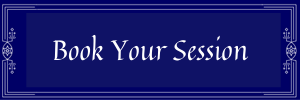What’s Going On Inside?
Your sympathetic nervous system is responsible for your body’s “Fight-or-Flight-or-Freeze” response. When you’re stressed, this system goes into overdrive, which makes you feel amped-up — like a fast-beating heart, shallow breathing and other telltale signs of stress, like sweaty hands and an upset stomach. The stress hormone is
On the other hand, Your parasympathetic nervous system is responsible for relaxing your sympathetic nervous system and helping you calm down. This is the “Rest and Digest” System.
What Can Be Done?
You can actually help reduce stress with breathing exercises. These grounding exercises are a common technique used to reconnect the mind to the body and calm anxious thoughts. Try these tips to improve your breathing and allow your body to follow.
Learn about massage as another stress relieving tactic here.
A natural rhythm of breathing includes inhalation, exhalation and resting. You can learn to observe and improve this rhythm. Some questions to ask yourself are: What’s longer, your inhalation or your exhalation? Can you rest between cycles? Do you feel strain when you breathe naturally?
Observe your Breath
When you are stressed, your breath may be fast and shallow. If you are tired, you may have an irregular, slow cycle with yawning as an attempt to increase oxygen coming in. When calm, the breath is usually regular and relaxed.
Practice breathing exercises when you wake up or when you get in bed at night. By practicing regularly, over time you can learn to notice when your breathing changes in response to stress, exercise, moods and rest. This can help you develop easy, rhythmic breathing and it just might reduce stress.
Begin with just 5 minutes a day, and increase your time as the exercise becomes easier and more comfortable.
Breathing Exercises You Should Try
“Exploratory Breathing”
- Sit or lie comfortably with closed eyes and observe the breath. Use no effort. Notice the quality of the breath and how it moves in the torso.
- Place one hand beneath your navel and one under or on your tailbone and notice the movement in these areas.
- Place your hands on each side of the lower ribs. Observe your breath. Now cross your arms, placing each hand under the opposite armpit. Feel the breath come and go. Then release your arms and observe any changes in your breathing.
“Belly Breathing”
This diaphragmatic breathing is deeper, slower form of breathing that enables oxygen saturation and tells our bodies and our brains that everything is ok and we are not in danger. This type of breathing helps strengthen your diaphragm.
- Rest your hands lightly on your stomach.
- Slowly and deeply inhale through your nose, pushing the hands outwards.
- Slowly exhale, squeezing the belly tight. Practice four inhales and exhales.
- Repeat until calm or asleep.
“Box Breathing” – A U.S. Navy SEALs breathing technique you can use to keep calm anytime anywhere
- Inhale for 4 seconds.
- Hold your lungs full of air for 4 seconds.
- Exhale for 4 seconds.
- Hold your lungs empty for 4 seconds.
- Repeat until calm or asleep.
Humming Bee Breath (Bhramari)
- Choose a comfortable seated position.
- Close your eyes and relax your face.
- Place your first fingers on the tragus cartilage that partially covers your ear canal.
- Inhale through your nose and gently press your fingers into the cartilage as you exhale.
- Exhaling through your nose, keeping your mouth closed, make a loud humming sound.
- Continue for as long as is comfortable.
The “Relaxing Breath” 4-7-8 Technique
- Inhale through your nose for four counts. Pick a pace that works for you.
- Hold your breath for seven counts. No straining or stressing is necessary.
- Exhale slowly through your mouth for eight counts.
- Repeat until calm or asleep.
Progressive Muscle Relaxation
In this technique, you breathe in as you tense a muscle group and breathe out as you release it. Progressive muscle relaxation helps you relax physically and mentally.
- Lie comfortably on the floor.
- Take a few deep breaths to relax.
- Breathe in. Tense the muscles of your feet.
- Breathe out. Release the tension in your feet.
- Breathe in. Tense your calf muscles.
- Breathe out. Release the tension in your calves.
- Work your way up your body. Tense each muscle group. This includes your legs, belly, chest, fingers, arms, shoulders, neck, and face.
*You may experience a little bit of lightheadedness or shortness of breath while performing these exercises. But this is just a function of learning to breathe more slowly.
Besides breathing exercises, massages can help reduce the stress from your mind as well as your body. Book your session today or contact us for more information
Love and Light,
Liraz
Liraz Bergman-Turner is a Licensed Massage Therapist, Reiki Master & Reflexologist. She is the owner of Heavenly Embrace Wellness, a massage and energy healing practice in Boulder, CO.
Liraz is a gifted healer. Her massage was both strong and gentle, anticipating what was needed for each muscle. Her office is beautiful and relaxing. She has all the amenities for pampering and the strength for deep tissue. I loved the essential oils throughout. Highly recommend!




